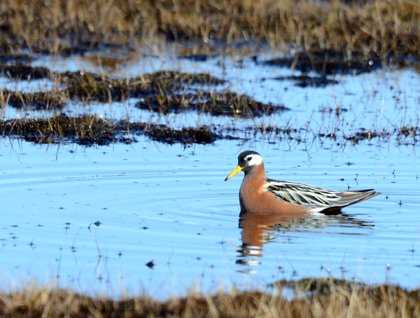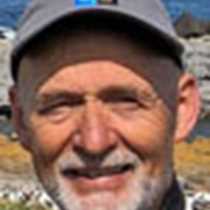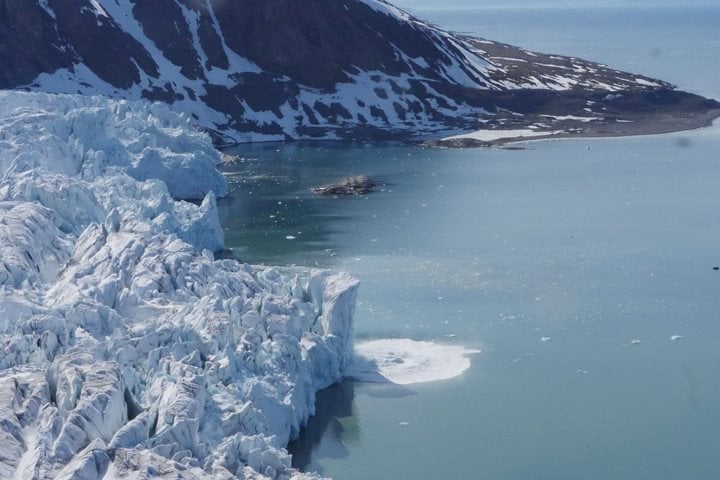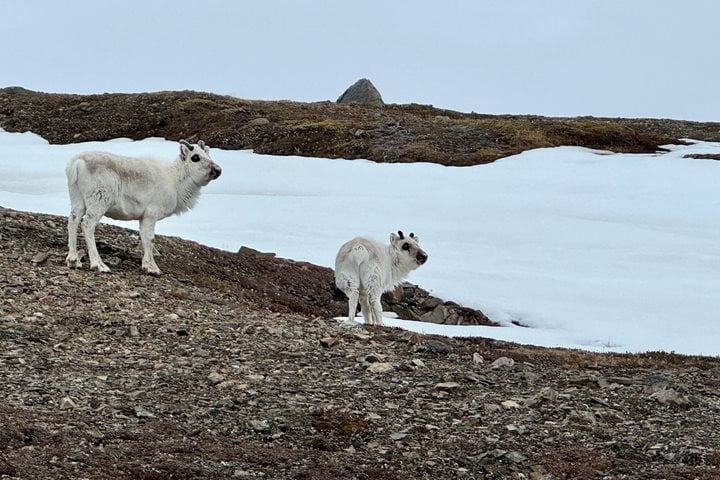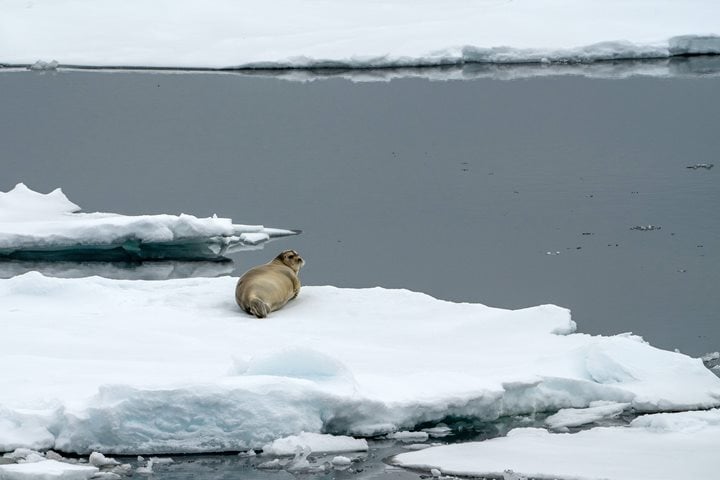We woke up as we were cruising along the west coast of Edgeøya (Edge Island). The anchor of National Geographic Explorer was launched outside of Årdalsnuten at the southwestern tip of the island.
The scheduled landing of guests this morning was slightly delayed because of a suspicious white furry creature that had been spotted onshore. However, staff going scouting identified the animal to be a light-colored reindeer, and the landing operation could start. This island used to be an important area for early hunters. Pomors from the White Sea in Russia and trappers from England may have started whaling and hunting here as early as the 15th century. This part of Svalbard was particularly important for the hunting of polar bears, arctic foxes, and reindeer. The hike today also revealed that this corner of Edgeøya is a great area for birders. We encountered two of the regular breeders of geese in the high Arctic: the pink-footed as well as the barnacle goose. Some of the hikers were also fortunate to find king eiders, a pair of long-tailed ducks, and a few red phalaropes. The female of the latter is more colorful than the male (see picture). The phalaropes have a quite unusual distribution of responsibilities between the sexes during the nesting season. Once the female has laid her eggs, she leaves, and the male is left with the rest of the duties. Many hikers also got a glance of an old trapper’s cabin. The cabin had obviously been out of use for many decades and is now facing a “death in beauty.”
It was a great morning for adventuring. Some guests chose kayaking or a Zodiac cruise on the calm seas. Just before lunch there was an option of doing a polar plunge into the cold waters of Eastern Svalbard.
After lunch we cruised across Storfjorden, heading for Sørkapp, the southernmost point of Spitsbergen. As we sailed, Global Perspectives Speaker on this trip, Dr. Andrew Clarke, gave a talk on climate change in the polar regions, with main emphasis on the Arctic.
Just as the first guests were about to enter the lounge for Recap, the spotting of two fin whales was announced from the bridge. Many guests appeared on the front deck, and the intense clicking of camera shutters could be heard every time the whales showed up. The fin whale is an enormous creature, surpassed only by the blue whale. A female fin whale may reach length of 24 meters, the male a couple of meters shorter.
After dinner our videographer, Bryan Christensen, showed a short preview of the video that is being produced during our voyage. The humming and clapping during his presentation gave proof of many satisfied guests after a truly fortunate day on this Friday the thirteenth in Svalbard.

